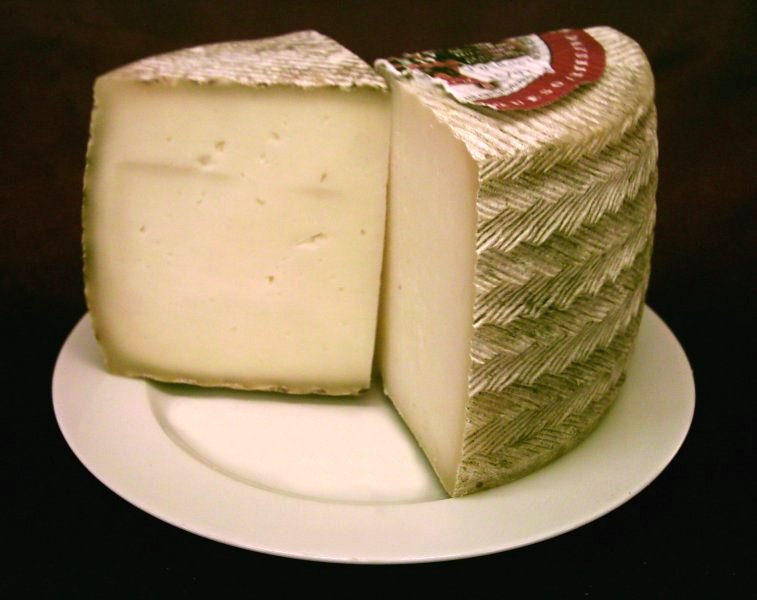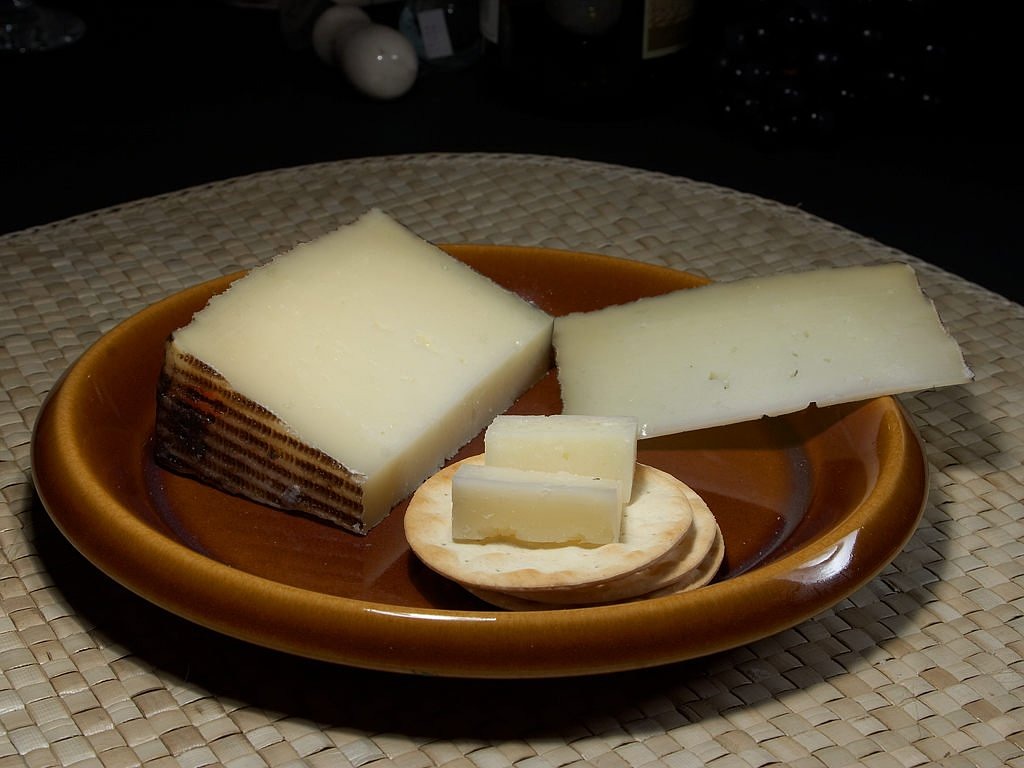Introduction
If you think of Spanish food you might be thinking of salty jamon, spicy chorizo and juicy oranges but if you’re not also thinking of cheese, you are missing out. Spain’s most famous cheese is undoubtedly the fresh manchego but there are more than 20 DOP cheeses produced in Spain’s regions. Admittedly, Spanish cheeses take a bit more research than their fellow European cousins like Italy and France, but they are well worth getting to know, we’ve listed the 10 most essential spanish cheeses to know and their origins below.

Manchego
Originating from the Mancha Sheep in specific areas of the La Mancha region, Manchego cheese is aged for a minimum of 60 days and offers a firm texture that slices with ease. In its youthful stages, it boasts a fresh, mild flavour, which deepens into nutty, caramel, and eventually peppery notes as it ages for up to two years. Frequently sliced and served as tapas, Manchego pairs seamlessly with slightly tart, sweet flavours, such as grapes or figs. You can also often find it accompanied by slices of jamón ibérico, for a notably rich pairing.
Cabrales
Cabrales is a tangy blue cheese made in Asturias, Spain. Often made from a mix of sheep, cow and goat milk, it is aged in caves for up to 6 months at 700 to 1500 metres elevation. This allows the blue mould to grow and permeate the whole way through the cheese. You can even go and visit some of these caves if you’re in the region. Historically, Calabres would be paired with sweet flavours like jams or cider, but it also pairs well with red wines and sausages.
Tetilla
From Galicia in the very north west of Spain, Tetilla is named for its shape. ‘Tetilla’ means ‘small breast’ in Galician and the cheese comes in a pear shaped cone topped with a nipple. It has a soft, thick and smooth texture with small air pockets. Pale yellow, Tetilla is creamy with buttery, slightly bitter and tangy flavours. Made from cow’s milk, it takes 10 – 30 days to mature in the hot and humid Galician climate. Tetilla is often served as a dessert in Galician cuisine. Try Tetilla with a dry, full-bodied wine, or the Galician white wines – Albariño or Ribeiro.
Mahon
Originating from Menorca, an island in the eastern Balearic sea, this cow’s milk cheese can range from mild to strong, and soft to hard depending on its age. During maturation, the cheese is hand rubbed with butter/oil and paprika which gives it a red tinge on the outside. Young Mahon, aged for less than four months, has a mild flavour, but will take on a saltier, more herbal and tangy flavour as it is aged. If Mahon is aged a year or more, the texture becomes parmesan like, with a caramelised, salty flavour. Look for artisanal mahon which is made with unpasturised milk and is more flavourful than its industrial pasturised counterparts.
A traditional way of eating Mahón is by sprinkling it with black pepper, tarragon and olive oil. It pairs well with Madeira or Rioja.
Idiazabal
A buttery, nutty and smoky hard cheese made from unpasteurised sheep’s milk in the Basque and Navarra regions of northern Spain. The smoky taste comes from the cheese being traditionally stored in the rafters above fireplaces while it matures, although the D.O. regulations now permit the cheese to be smoked at the end of the maturation process. Idiazabal has a compact texture and is often eaten fresh with quince paste. To enjoy tradition, serve Idiazabla on toasted bread, over salted crackers or grated in salads, or serve with Tempranillo, dry cider, or Saison beer.

Zamorano
A sheep’s milk cheese from the Zamora province, similar to Manchego but with a distinct flavour profile due to different sheep breeds and ageing processes. This sweet, nutty and salty cheese is served as a table cheese with White, Red, and Zinfandel wine
Ibores
A goat’s milk cheese from Extremadura in western Spain, another cheese often rubbed with paprika, providing a distinctive flavour and colour. It is aged for at least 60 days, or at least 100 to be labelled ‘artisanal’. The smell is somewhat strong and earthy while the flavour is clean with some acidic, spicy bite and finish characteristic of goats cheese. Pair it with fig jam or a sweet cracker
San Simon
Another Galician cheese, San Simon resembles Tetilla in shape at least, although the shape is more teardrop than breast. It is a semi-soft smoked cow’s milk cheese, with a creamy texture and mild, slightly woody, buttery taste. Because of the size of the cheese it remains soft and custardy in the middle, the smoking gives it a slightly meaty taste. Pair it with quince paste, stone fruit if in season, or use it in cooking
Valdeon
A intense, creamy blue cheese from Castilla y León, in North-Western Spain. Sometimes known as Picos de Europa, its blue mould veining is very dense, and this cheese is very soft and spreadable. It is made from cow and goat’s milk, and has a sharp, spicy blue cheese flavour. Valdeon is often used in sauces and spreads, but also pairs well with fresh fruits and red wine.
Roncal
Roncal was the first Spanish cheese to achieve DOP status. A hearty, robust sheep’s milk cheese from Navarre, in the Spanish Basque region. It is hard cheese and is aged for about 6 months to achieve a rich olive-like flavour with nutty hints. At maturity its rind has a velvety layer of blue grey mould. Dice it up and serve with nuts or use it with jamon in a sandwich.
See our other posts about British cheeses or cheesboards